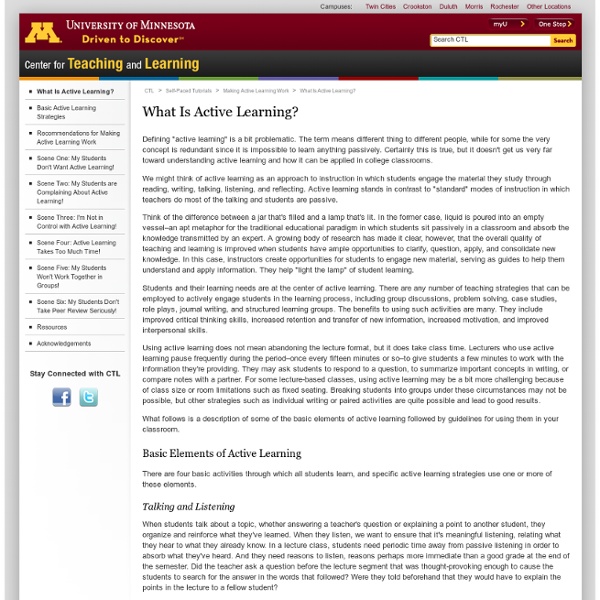Big Picture Education Australia | Big Picture Education Australia
Big Picture Education Australia aims to stimulate vital changes in Australian education by generating and sustaining innovative, personalised schools that work in partnership with their greater communities. We design break-through public schools, research and replicate new designs for education, train educators to serve as leaders in their schools and communities, and actively engage the public as participants and decision makers in the education of our young people. Our philosophy is grounded in educating "one student at a time." We promote and create personalised education programs that are unique for each student. We believe that true learning takes place when each student is an active participant in his or her education, when his or her course of study is personalised by teachers, parents and mentors who know him or her well, and when school-based learning is blended with outside experiences that heighten the student's interest.
TeacherTube - Teach the World | Teacher Videos | Lesson Plan Videos | Student Video Lessons | Online Teacher Made Videos | TeacherTube.com
Rethinking Engagement | Theory and Practice
“Children are always on task; the important question is, what is the task?” – Peter Johnston For Millennials, the End of the TV Viewing Party by Alex Williams (New York Times, November 7, 2014) With the advent of the smartphone, landlines are starting to become a thing of the past. Creating and Composing in a Digital Writing Workshop by Troy Hicks and Kristin Ziemke (Digital Writing, Digital Teaching, November 5, 2014) This collaborative post was written in response to a piece by highly respected literacy expert Nancy Atwell. Effects of Classroom Practices on Reading Comprehension, Engagement, and Motivations for Adolescents by John T. This research study conducted through the University of Maryland wanted to determine the correlation between classroom supports, student motivation, and informational text comprehension. Dr. The Mindful Educator by Sarah McKibben (ASCD Education Update, November 2014) Connecting the dots… In my humble opinion, this is a wonderful example of engagement.
Toronto SEO Services
5 Heutagogical Tips to Empower Lifelong Learners Online
Posted by Becky Krill in Educator Tips, Online Education Trends on November 19, 2014 Prior to joining the marketing team at SchoolKeep, I worked as an educational program manager for an experiential learning company. As the company grew, I was forced to take on new, intimidating marketing tasks. I realized I had quite a bit to learn. Instead of going back to school for a marketing degree, however, I found HubSpot’s blog, which led to their Academy, and then of course to Inbound.org. During my transition to marketing, I became a heutagogic learner in just under 3 months, meaning I was markedly more self-determined, motivated and highly autonomous, without ever setting foot in a classroom. In a world where information is instantly available to us, the educator is no longer the sole proprietor of subject matter expertise. Related Post: As Education Grows Beyond the Classroom, How Will the Role of Instructional Designers Evolve What is Heutagogy? Tip 2: Conduct a Needs Assessment
SEO & Online Marketing Agency | Vital Traffic Solution
WALK THE TALK! Lesson Study as Action Research for Leaders by @MrsHollyEnglish
This is a re-blog post originally posted by Holly Fairbrother, and published with kind permission. Lesson Study as a research concept is a new idea to me – however, the elements of what comprises it are not. I am an advocate of peer observations and feedback as an invaluable tool in improving teaching and learning. I think there are a number of reasons for this but the main one being trust. It was with a refreshing air then that I read the article by Gebert and Ginsberg (2012) who, as leaders, wanted to use Lesson Study as a way to address improving teaching and learning with a focus on “creating for teachers, the same learning conditions they seek to create for students?” I find collaborative planning and peer observation a valuable method of ensuring our instruction is effective, and have worked in schools where the professional learning focus was on just this. Another positive that I found was the element of choice. Lewis, C., Perry, R., & Murata, A. (2006).
Flickr: vitaltrafficsolution
Welcome to Vital Traffic Solution. You probably landed on our page by searching Google for SEO in one of the cities that we have a ranking for or by watching our videos on YouTube. We have been helping hundreds of businesses all over Canada like yours to get their business websites ranking on first page of Google search results over the years. You might still be asking why I need an SEO expert. SEO helps you direct your would-be clients to your website. Ranks Higher To see better search rankings hence increasing exposure, then choosing our SEO expert to help with your search engine optimization needs is your best option. Get More Traffic Our experts have the know-how on increasing traffic through better rankings from a fully optimized site. Increase Conversion Rate Our SEO specialists do the groundwork to ensure you are reaping the fruits necessary. Optimize Keywords When we target and enhance product-specific keywords, this entices customers to visit your website and spend time there.



